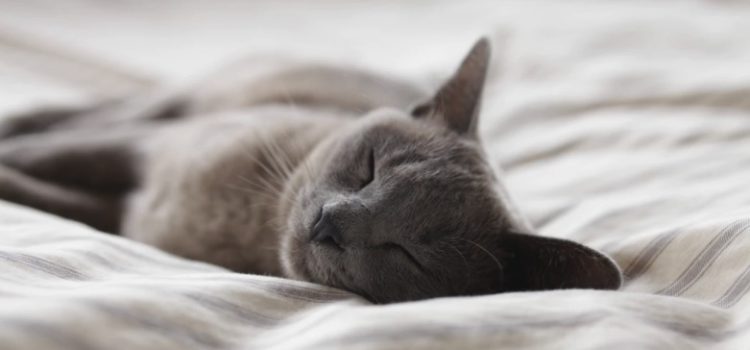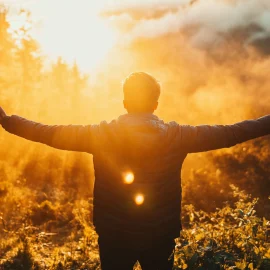

This article is an excerpt from the Shortform summary of "Why We Sleep" by Matthew Walker. Shortform has the world's best summaries of books you should be reading.
Like this article? Sign up for a free trial here .
Are you looking for interesting facts about sleep? Are you eager to find out how human sleep compares to other animals?
Get ready for some super interesting facts about sleep. Read about how dolphins, birds, and apes sleep, and how their sleep compares to that of humans, with these 9 interesting facts about sleep.
Interesting Facts About Sleep
What are some interesting facts about sleep? In truth, there are endless fun facts about sleep. Here are just a few favorite sleep facts for your enjoyment.
Sleep in Animals
One of the fun facts about sleep is that sleep is present in all animal species, even invertebrates. And bacteria that survive for longer than 24 hours have circadian-like rhythms. As we’ve said before, this suggests that it’s universally critical for survival.
We ask all the time why we sleep. One researcher posed an interesting inversion of the question – if wakefulness is damaging to the body and sleep recovers it, why did life ever bother to wake up? (Shortform note: of course, you can’t be productive and reproduce when sleeping, so sleeping too much would be evolutionarily disadvantageous.)
The amount of sleep per day varies from 4 hours in elephants to 19 hours in bats. There are no strong correlations between animal characteristics and amount of sleep, though within a same-sized animal, a more complex brain increases sleep.
Among animals, REM sleep occurs only in birds and mammals. Because REM evolved independently in these two distant evolutionary trees, REM likely performs a critical function that NREM cannot accomplish, or that REM is more efficient at accomplishing.
Interesting facts about sleep and animal sleep patterns
- Cetaceans (dolphins, whales) sleep with half their brain at a time. They also don’t have REM sleep (as formally defined), since the muscle atonia would prevent swimming. But they may have some variant of REM that’s harder for researchers to detect.
- Birds in a flock will have most birds in full-brain sleep, then birds in the perimeter sleeping with half their brains to stay alert for danger
- Similarly, humans in a new environment (like a new hotel room) show one half of the brain sleeping lighter than the other, like it’s staying alert to detect danger. This is why the first night in a new environment can be so unrestful. As you acclimate to the environment, this half-brain sleep dissipates.
- Transoceanic birds that cross thousands of miles have ultra power naps, sleeping for seconds at a time.
Sleep in Humans
What’s the ideal human sleep pattern? Native pre-industrial tribes show a biphasic sleep pattern, with 7-8 hours at night and a 30-60 minute nap in the afternoon. At night, they sleep 2-3 hours after sunset, awaking around dawn. There are a lot of interesting facts about sleep in humans.
- All people tend to have a dip in energy in mid-afternoon. (So if you’re scheduling a presentation, avoid the slot right after lunch.)
- A study of Greek siestas showed that people who abandoned siestas (due to political and social pressure) showed 37% increase risk of death from heart disease compared to those who maintained siestas.
What about supposed historical styles of sleeping, like segmented sleep (two periods of sleep at night, separated by a few hours of wakefulness)? Are these real sleep facts? The author argues this is mostly a cultural artifact, and not a natural way to sleep. No evidence suggests a biological desire to wake up for a few hours in the middle of the night
Here are some more sleep facts.
Relative to great apes, humans sleep less (8 hours in humans vs 10-15 hours in apes) and have more intense REM sleep (20% in humans vs 9% in apes). Matthew Walker hypothesizes this evolved as follows:
- Apes sleep in trees and enjoy great safety at night.
- In the human ancestor Homo erectus, an upright body posture and shorter arms made sleeping in trees more difficult. REM sleep is also dangerous in trees because limp muscles increases risk of falling out.
- Discovery of fire allowed humans to ward off predators and parasites at night. But danger still inevitably lurked, so humans who could sleep more efficiently for less time were evolutionarily selected for.
- Then as human societies became more complex, REM sleep became more important. REM sleep is found to be critical for 1) internal emotion regulation, 2) reading emotions from others, 3) creativity. This led to improved survival strategies and larger social groups, which further increased brain complexity and more need for REM sleep, forming a positive feedback loop.
Sleep is a fascinating subject, and you can find plenty more interesting facts about sleep. Mammals and birds experience REM sleep, but not all other animals do—maybe you can look into interesting facts about sleep for fish next.

———End of Preview———
Like what you just read? Read the rest of the world's best summary of Matthew Walker's "Why We Sleep" at Shortform .
Here's what you'll find in our full Why We Sleep summary :
- Why you need way more sleep than you're currently getting
- How your brain rejuvenates itself during sleep, and why nothing can substitute for sleep
- The 11-item checklist to get more restful sleep today






